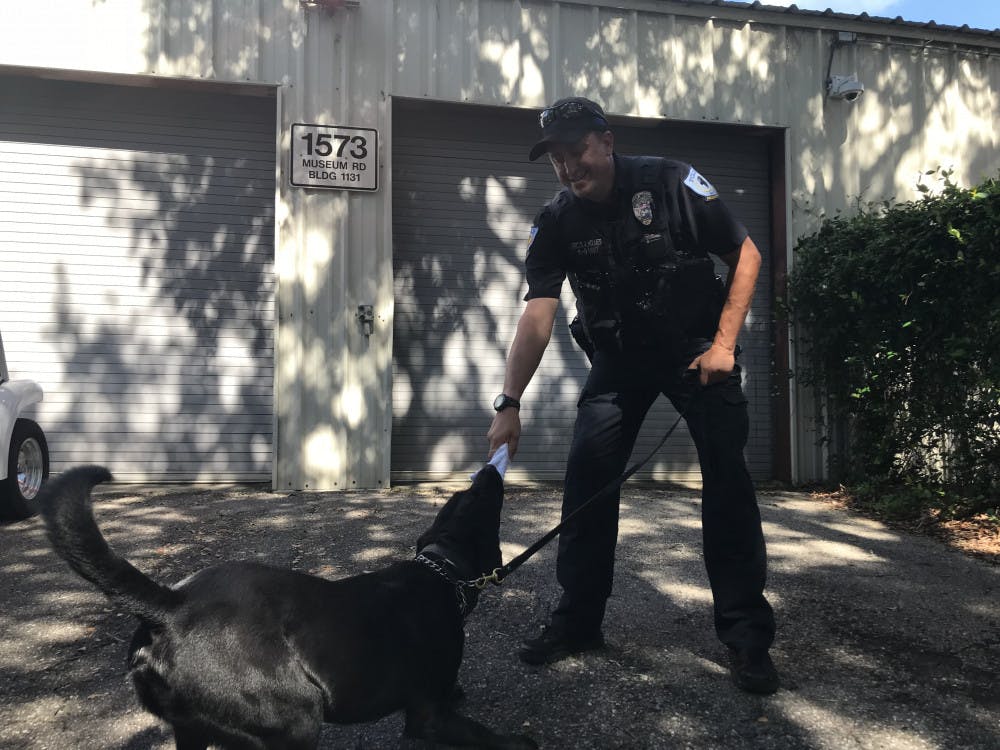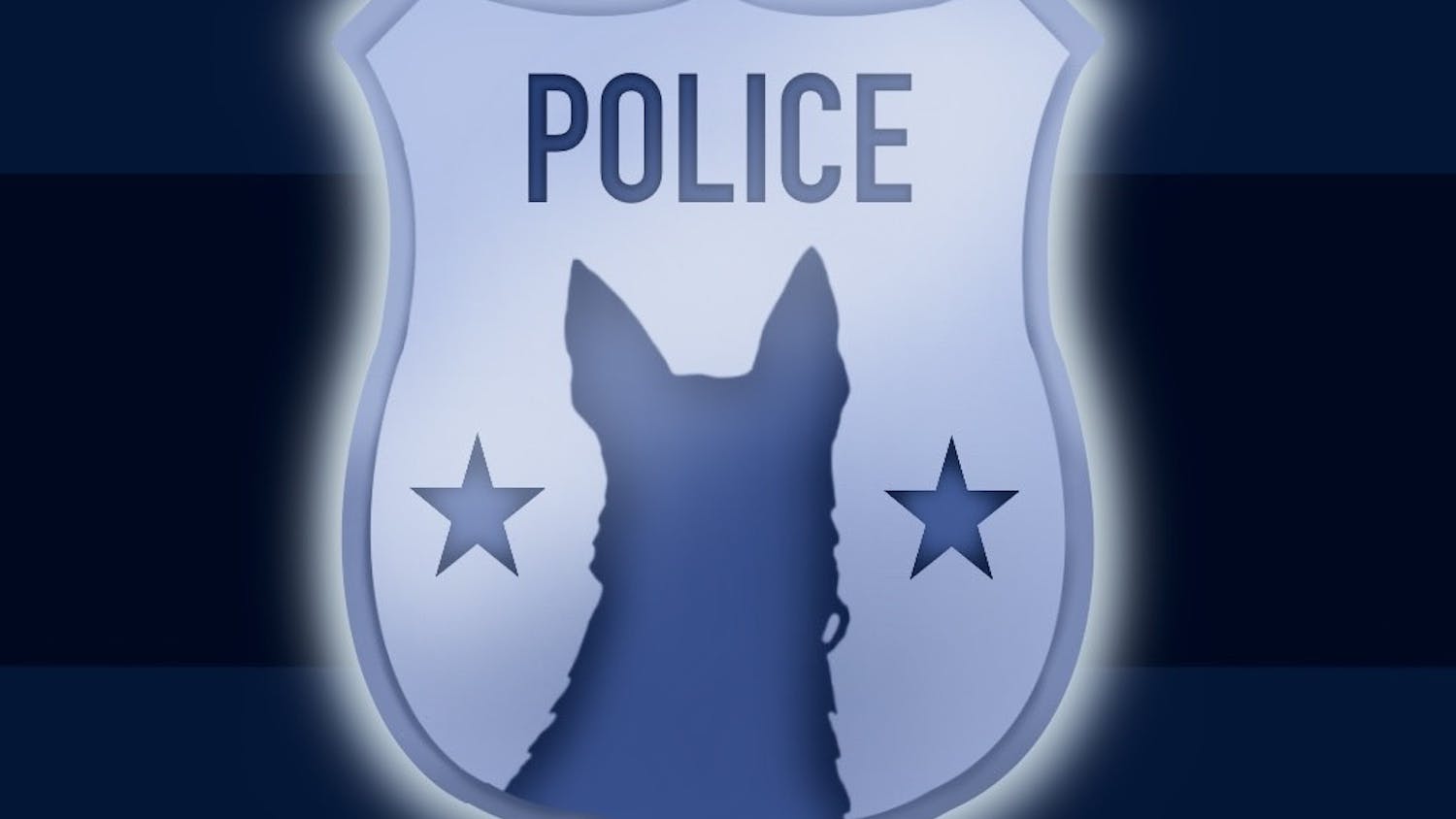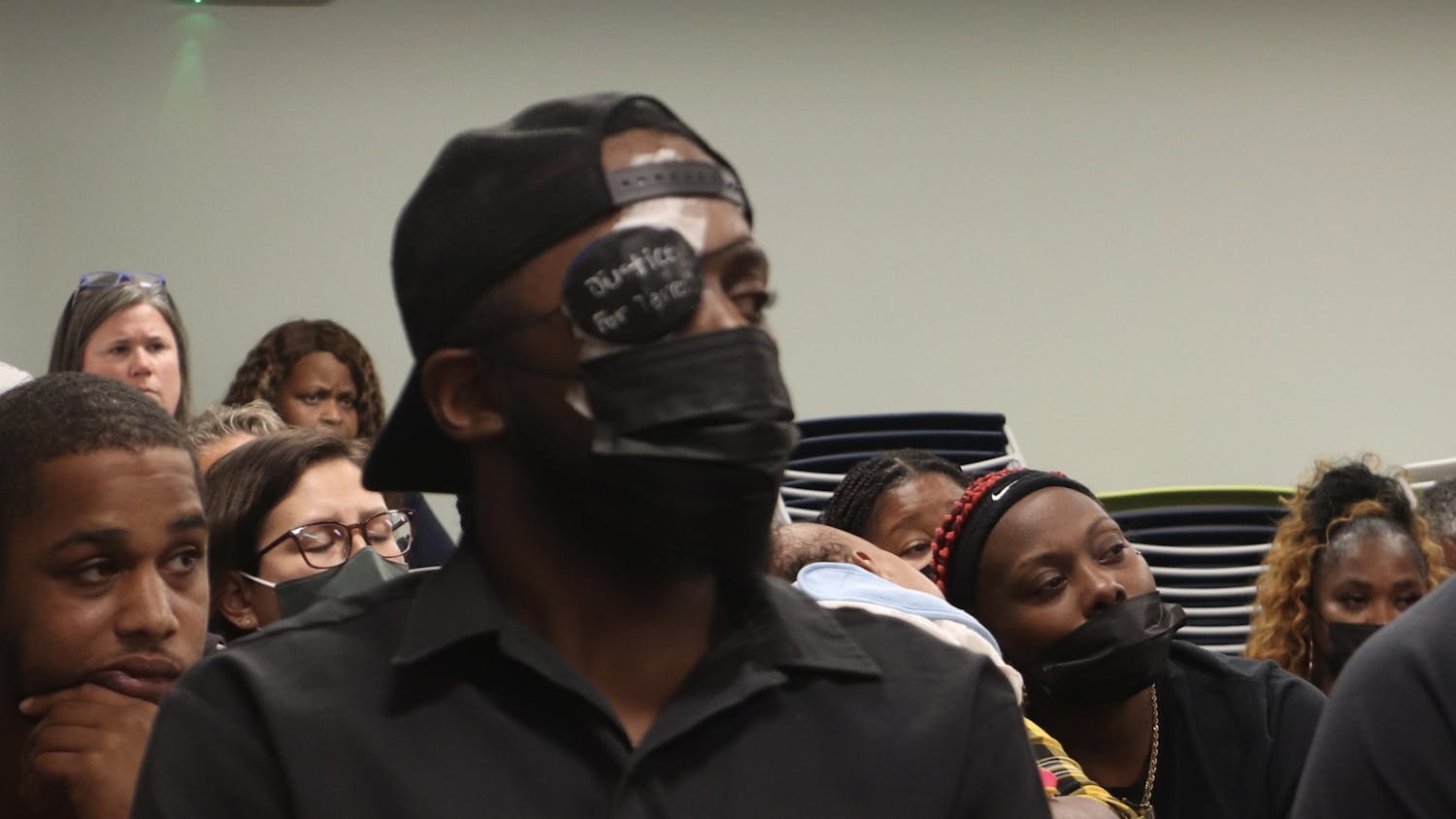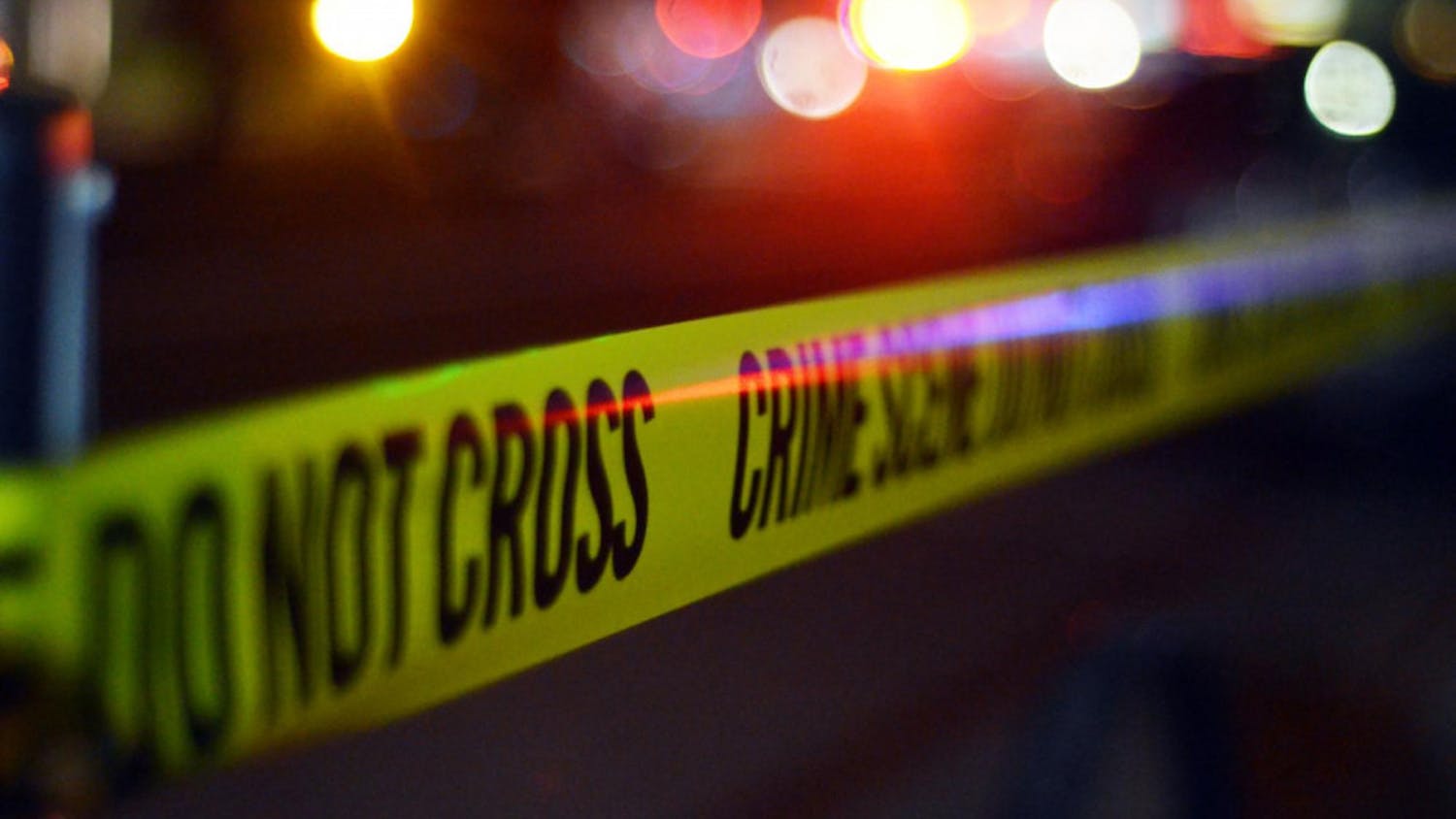When Gainesville Police officer Ed Ratliff and his K-9 partner, Ace, patrolled along Southeast Eighth Avenue, they weren’t expecting to find their first suspect as a solo team.
Ratliff and the German shepherd/Belgian Malinois mix had been working solo for two months since their certification in April. Late on June 16, Ace spotted him first.
Laying in the bushes, a man accused of robbing a Dollar General with a handgun had covered himself in leaves. Once Ace alerted him, Ratliff noticed the man’s shoes sticking out from the bushes. He called for other officers and waited for them to arrive before approaching the man and apprehending him.
“If it wasn’t for Ace, we wouldn’t have found him,” Ratliff said. “I was really happy, like a proud dad.”
Ace, almost 2 years old, is one of seven dogs in GPD’s K-9 unit. For about five months, the dogs and their handlers train together before being certified to do patrol work by the Florida Department of Law Enforcement, Ratliff said.
GPD officer Joshua Meurer and his dog, Ranger, were most recently certified June 28. The 18-month-old puppy was flown in from Germany four months before.
“He wouldn’t sit still when he got here,” Meurer said. “He was running around the house. He had never seen a screen porch before, so he ran at it and bounced off the screen. He just shook it off.”
When looking for K-9 candidates, people search all over the world for dogs that display a high drive to go after and find things. The dogs should have the ability to listen and to use their noses — instead of just their eyes — to look, Meurer said.
At GPD, five of their dogs are dual-purpose while the other two are single-purpose. Officer Rob Rogers’ dog, Nero, is a dual-purpose dog trained to sniff out narcotics and apprehend individuals. In about three or four months, Ranger will also be dual-certified.
In the meantime, Ranger and the rest of the GPD unit train 10 hours every week, more than the mandatory amount, according to Rogers.
The unit trains at “the barn,” a nickname for the fleet operations facility where the city of Gainesville services all city vehicles.
The large fenced-in field being next to the parking lot makes “the barn” a good place to train, Rogers said. There’s space to train and hide scents for the dogs to find — without worrying about anyone being harmed.
All seven dogs have obedience training where they’re expected to remain at their handler’s side as they turn, walk and run around the field. They are also expected to lay down at a hand gesture and stay in the position until they’re given another gesture.
The dogs being trained for certification each had individual obedience training. Before they were certified, Ranger and a visiting K-9 from St. Johns County Sheriff’s Office had to lay down in the middle of the field, without their handler, while two officers walked around the dog to see if they would stand up or ignore them.
In another exercise, an officer shot blanks off to the side while the dog walked next to his handler, testing to see if they would respond to the sound of the gun. Cpl. Jeff Kerkau said it’s important to train them not to go after gunfire because the person shooting the gun may be another officer.
Cpl. Dylan Hayes-Morrison, Ares’ handler, said, “I could’ve never anticipated how difficult being a K-9 handler is. It’s impossible to really recreate scenarios, so every call is a challenge. The pressure falls on us. We can’t just say, ‘this person is too dangerous.’”
The dual-purpose K-9s also had to search through the parking lot full of cars to find a narcotics scent that was planted before they arrived. The handlers brought out each dog by themselves to sniff at the cars and alert them, either passively or actively.
Dogs like Nero have an active alert, letting their handlers know they’ve found something by scratching at it. Other dogs sit down instead and stare, not letting their handlers pull them away until the spot’s been checked.
At UF, the police department employs four bomb dogs. Because they’re detecting explosives and don’t want to accidentally set them off, their dogs have passive alerts.
Boomer the bomb dog, a black Labrador with a habit of nibbling grass when he’s bored, is trained to detect about 22 different odors. Along with Boomer, UPD has two other Labradors and a German shepherd.
Officer Dale Holmes, Boomer’s handler, said the Labradors are better for crowds since they’re not stereotyped as police dogs.
“With a dog that’s a little bit less scary,” Holmes said, “we can get up and close to a person through crowds without being too scary and making people move away from him. I want to be able to get close to somebody.”
Since GPD doesn’t have bomb dogs, UPD brings in their dogs if there’s a situation around Gainesville that may involve explosives.
The bomb dogs are trained to identify the spot of the explosives as accurately as possible. Like a gradient, the strength of the scent helps the dogs narrow down the location. The closer they get to the scent, the stronger it gets. Once the scent starts to weaken, they know they’ve passed the area and backtrack.
Like most K-9 dogs, Boomer is rewarded with a toy after he identifies a scent, encouraging him to alert his handler for specific scents. Each dog has their own reward toy, and Boomer and Holmes enjoy playing tug-of-war with a rolled-up cotton towel.
“He loves coming into work,” Holmes said. “Every day is play time.”
At the end of the day, the K-9 dogs go home with their handlers. Several officers said their dogs can tell when they’re off the clock.
GPD Cpl. Kerkau said it’s important to let their K-9s just be dogs at home. Kerkau’s dog, Roo, knows the work day is over once his work collar is off and hung in the garage.
Ratliff, who takes his dog on family walks with his fiancée, said, “When we pull into the neighborhood, Ace almost sighs because he knows we’re home.”
Follow Jessica Curbelo on Twitter @jesscurbelo and contact her at jcurbelo@alligator.org.
Boomer and officer Dale Holmes play tug-of-war with a rolled-up towel after Boomer finds the planted scent during a demonstration.
Officer Ed Ratliff and his dog, Ace, run off the field after doing apprehension training. Another officer wore a sleeve for Ace to safely bite down on his forearm.
Ares sniffs at the car where a narcotics scent was planted while his handler, Cpl. Hayes-Morrison, watches.
Ares gets to play with his reward toy, a red rubber pipe, after finding the scent. K-9 dogs are trained with reward toys to encourage certain behavior.
Ares and Cpl. Hayes-Morrison pose outside of the building where the unit meets up before going to training at “the barn.”
Boomer poses with his handler, UPD officer Dale Holmes. Boomer is one of four bomb dogs that works for UF.
GPD dogs walk with their handlers during obedience training. Part of the training makes sure the dogs will remain next to their handlers when running or walking.






